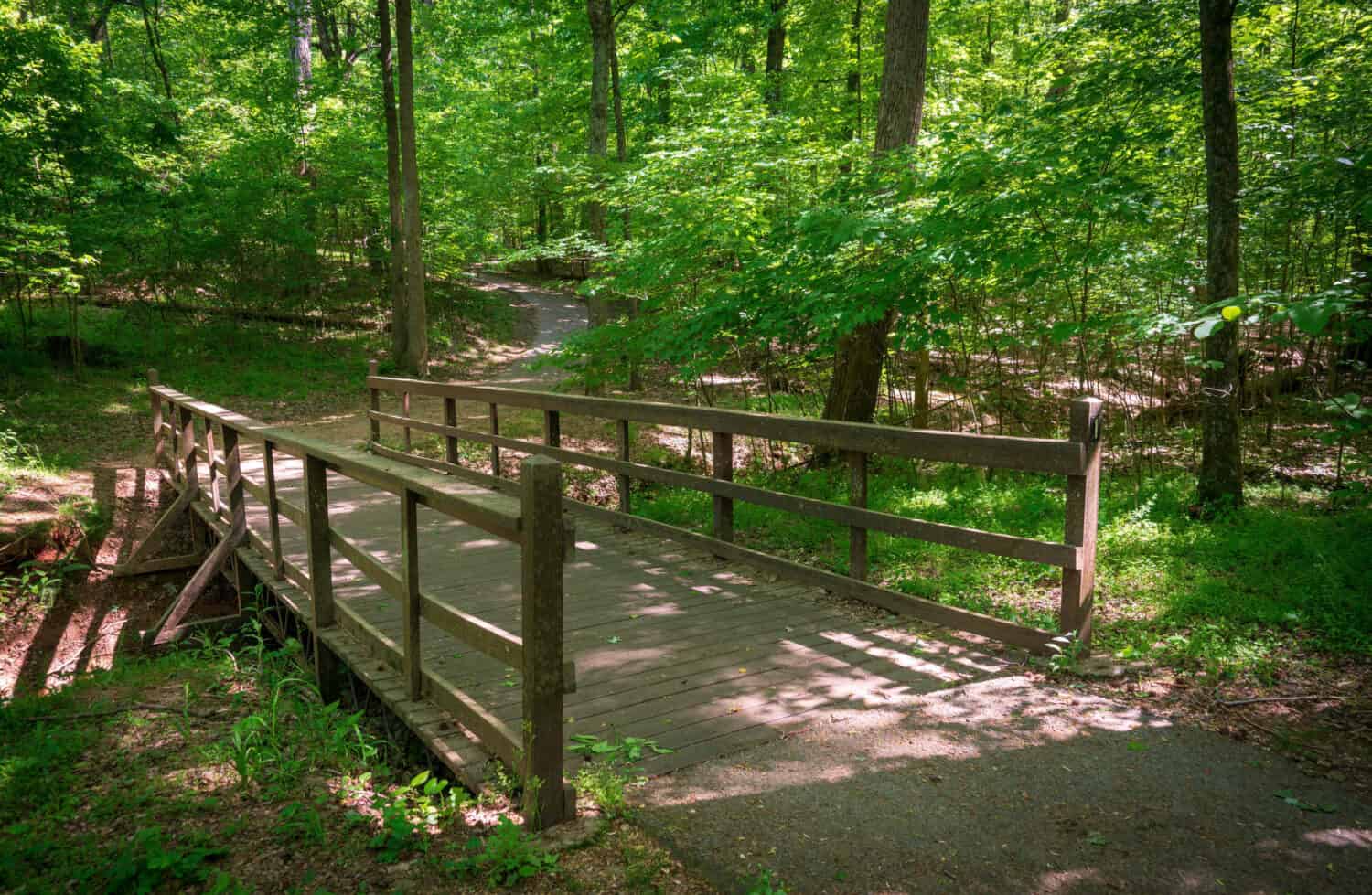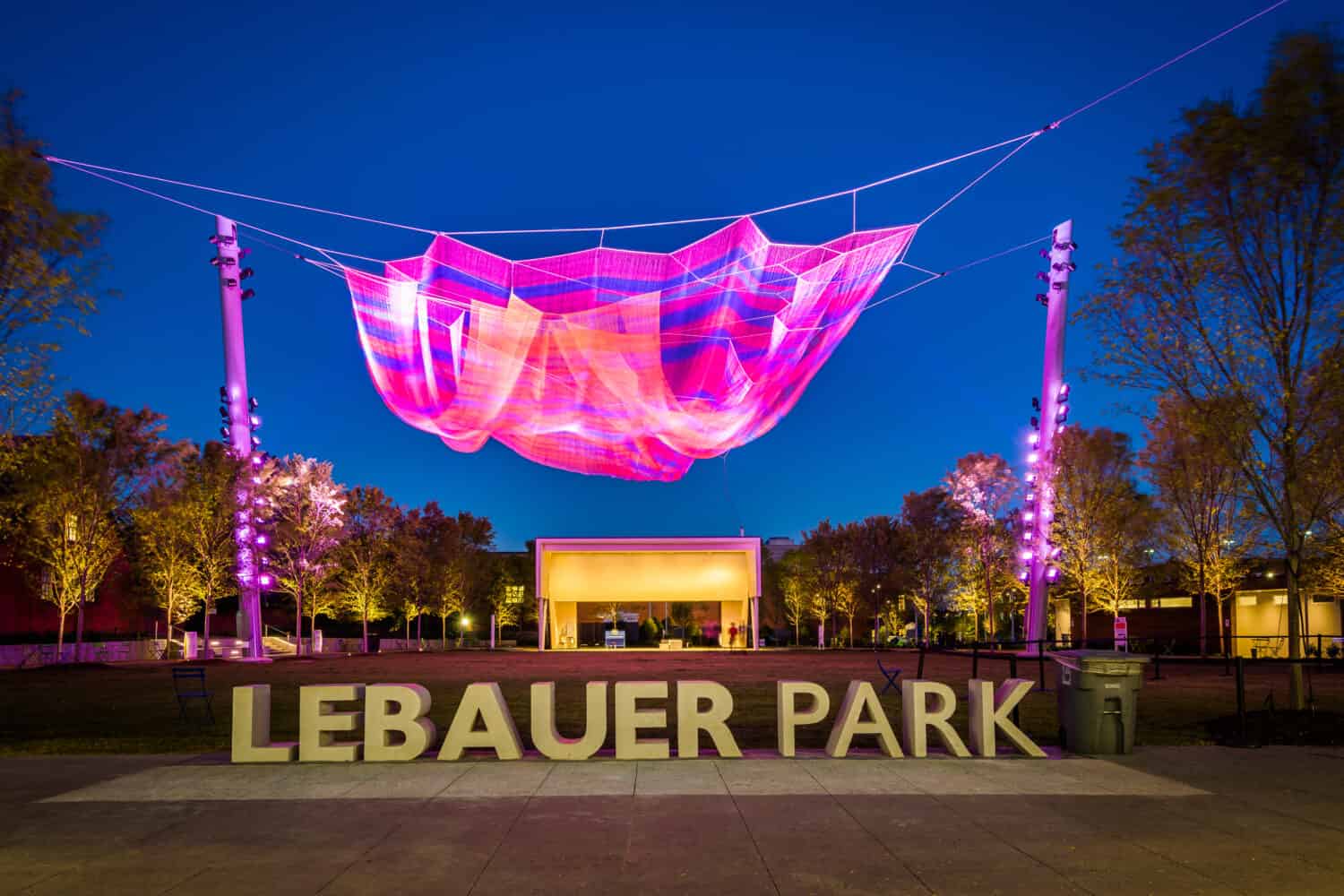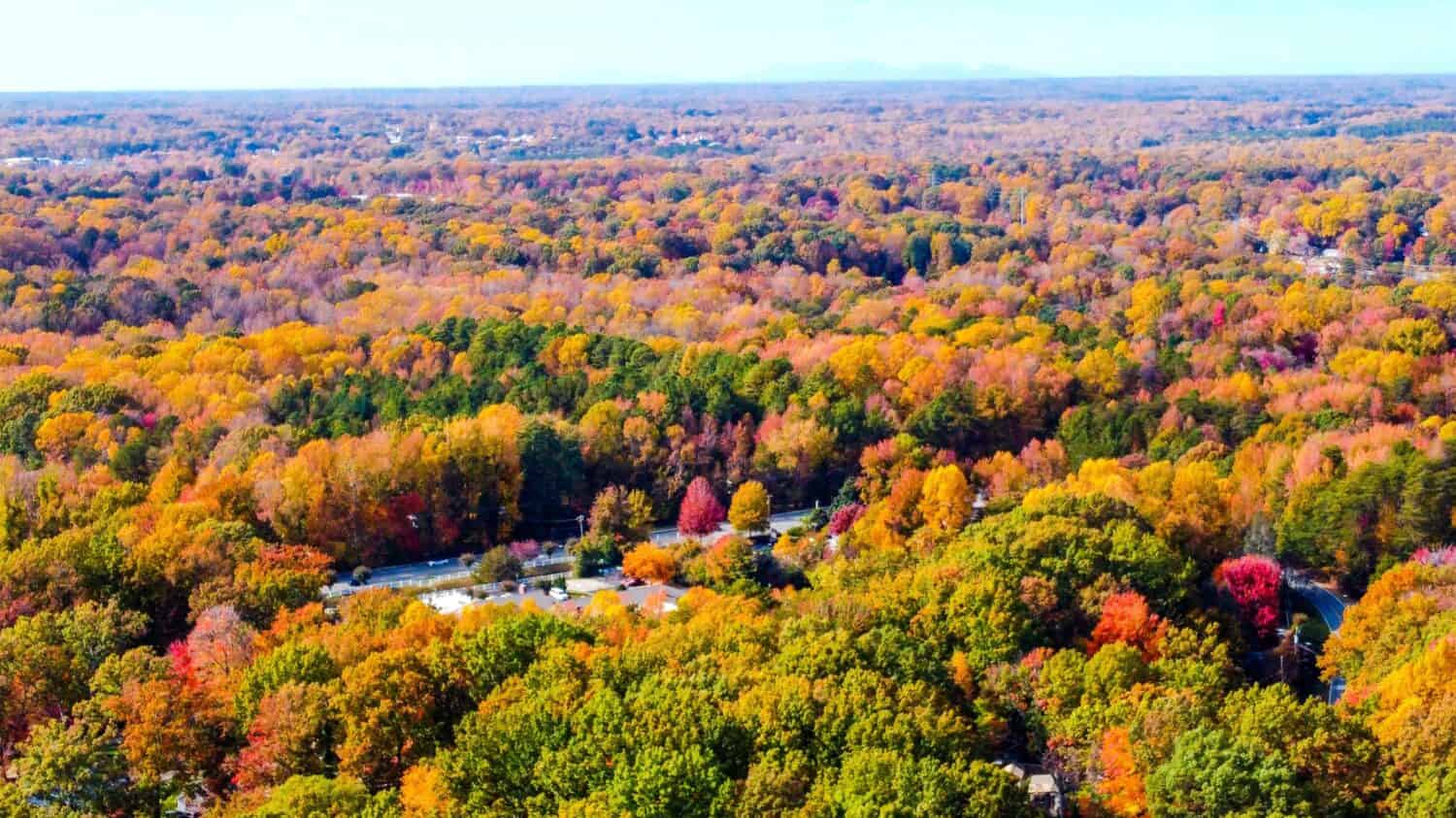A city with plenty of North Carolina charm, Greensboro is conveniently located near other major cities in the Tar Heel State. It is in the central part of the state. Greensboro played an important role in major historical moments, especially during the fight for civil rights in the South. Greensboro is one of three cities in the Piedmont Triad, which is known for its role in the textile industry and transportation. There are plenty of green spaces to enjoy nature as well as concert and event venues in the city.
There are a lot of wonderful places to visit and sites to see. But where exactly is Greensboro and how do you get there?
Where Is Greensboro Located on the Map?
Greensboro is located in North Carolina in Guilford County. It is the largest city in the county and the third-largest city in the state by population. The only cities in the state that have more residents are Raleigh and Charlotte. Greensboro is home to roughly 300,000 people and serves as the county seat. It is located in the center of the county and is home to the courthouse and other government buildings.
It is only 30 minutes from nearby Winston-Salem and easily accessible using Highway 40 or other smaller local roads. Known as the Piedmont Triad, the cities of Greensboro, Winston-Salem, and High Point have around 1.7 million residents between the three of them. The Piedmont Triad is known for manufacturing, especially textiles and furniture. Because the three cities are so interconnected, many residents live, work, and travel between the three often.
How Far Is Greensboro from Other Major Cities in North Carolina?

Greensboro is the largest city in the Piedmont Triad, which includes Winston-Salem and High Point.
©Alexander Lukatskiy/Shutterstock.com
Traveling southeast from Greensboro, it takes around 1 hour to reach Durham and just another 20 or 30 to get to the state capital, Raleigh. Charlotte is just under 100 miles to the southeast and takes around an hour and a half to reach via Highway 85. Because it is located in the central part of the state, it is easy to reach the mountains to the east or the ocean to the west. It is also very accessible to other major cities in North Carolina and even Virginia.
Greensboro is located in the Piedmont region of rolling hills. These are located between the larger Blue Ridge Mountains to the west. To the east is the Atlantic Ocean and North Carolina’s Outer Banks. It is around 130 square miles in total, although the Piedmont Triad covers a much larger area.
History of Greensboro

The Guilford Courthouse National Military Park includes the site of major events in the American Civil War.
©Zack Frank/Shutterstock.com
Indigenous tribes lived along many of the waterways in the area, including rivers and lakes. The majority of Native American tribes recorded in history spoke Siouan. When Quaker settlers arrived around 1750, the area quickly became a very active and prominent place for Quaker meetings. The town was founded under the name of Greensborough in the late 18th century and named for Major General Nathanael Greene. Greene was a skilled American military general who led American forces and inflicted major casualties on General Cornwallis’ troops at the 1781 Battle of Guilford Court House.
As the town grew into a city, transportation and textile mills were two major contributors to its economic growth. North Carolina joined the Confederacy during the Civil War but Greensboro remained relatively removed from the politics and conflict until the very end of the war. As Union forces defeated Confederate forces and the Confederacy leadership was forced to flee from city to city, they ended up in Greensboro. It was the last time that the major Confederate leaders were together before separating. The final surrender of the war was done in nearby Durham shortly after. Today, you can visit the Guilford Courthouse National Military Park to walk in the shoes of those who were part of these moments in history. The park is also a nice space to enjoy the beauty of nature in Guilford County.
Role in the Civil Rights Movement
Greensboro would go on to become a major part of the civil rights movement. The Greensboro sit-ins, which began in 1960, were led by four students from North Carolina A&T State University. The students sat at a Woolworth’s lunch counter that only served white patrons and refused to leave when denied service. Over months, hundreds of other protestors joined in. This sparked similar sit-ins around the South and ultimately led to the desegregation of lunch counters. Protests in 1962 and 1963 included marches and planned challenges to segregation policies. Many high school and college students participated and brought attention to the unfair practices in Greensboro and the South. These protests resulted in the government desegregating businesses and schools.
Unfortunately, civil unrest persisted and desegregation took decades to implement. Protests and confrontations in 1970 and 1979 resulted in gunfire and some participants, mostly black, were killed. The 1979 incident, known as the Greensboro Massacre, was particularly problematic because the six KKK members charged were acquitted by an all-white jury. This brought national attention to the ongoing issues. A 1985 lawsuit ordered the city and police involved to pay damages to the Greensboro Justice Fund.
What is Greensboro Famous For?

LeBauer Park is a fun place to spend time while in Greensboro, North Carolina.
©Jon Bilous/Shutterstock.com
If you are visiting Greensboro, a stop by the International Civil Rights Center and Museum is a must. Because of its role in the civil rights movement, Greensboro is the perfect place for this museum. In fact, the museum itself is located in the same building where the 1960 nonviolent protest of a ‘Whites Only’ lunch counter at a Woolworth’s lunch counter made national headlines. Founded in 1993, the museum opened for visitors exactly 50 days after the first sit-in.
Performing arts are also alive and well in Greensboro. Venues and companies include the Greensboro Ballet, the Greensboro Symphony, the Steven Tanger Center for the Performing Arts, the Triad Stage, and the Carolina Theater. The Greensboro Coliseum Complex hosts large-scale concerts as well as sporting events. The Greensboro Science Center is a great place for those who want to learn and enjoy hands-on activities.
There are also plenty of parks and green spaces to enjoy during a visit to Greensboro. The Bog Garden, Bicentennial Garden, and Greensboro Arboretum all provide walking trails with beautiful views of nature and cultivated gardens. LeBauer City Park combines outdoor spaces with performance and event spaces to bring city residents and visitors together.
For history buffs, the Blandwood Mansion is a must-see attraction that shows some of the earliest and best examples of Tuscan-inspired architecture in America. It was designed by Alexander Jackson Davis for then-Governor of North Carolina John Motley Morehead. Today, it is a museum. You can tour the mansion as well as the gardens and grounds outside. Because he had this mansion, Governor Morehead took a special interest in Greensboro, resulting in its growth into the city that it is today.
What Is the Climate in Greensboro?

Greensboro enjoys all four seasons. Wirestock Creators, Shutterstock
©Wirestock Creators/Shutterstock.com
Greensboro enjoys four distinct seasons but doesn’t have extreme heat in the summer or cold in the winter. Like other cities in central North Carolina, it can get humid, particularly in the late summer. Greensboro typically gets some snowfall each year but not enough to cause major disruptions or dangers to residents. Rain and thunderstorms are more common. These tend to occur more in the summer months. Tornadoes can also form and cause localized damage in some parts.
The photo featured at the top of this post is © Kevin Ruck/Shutterstock.com
Thank you for reading! Have some feedback for us? Contact the AZ Animals editorial team.







